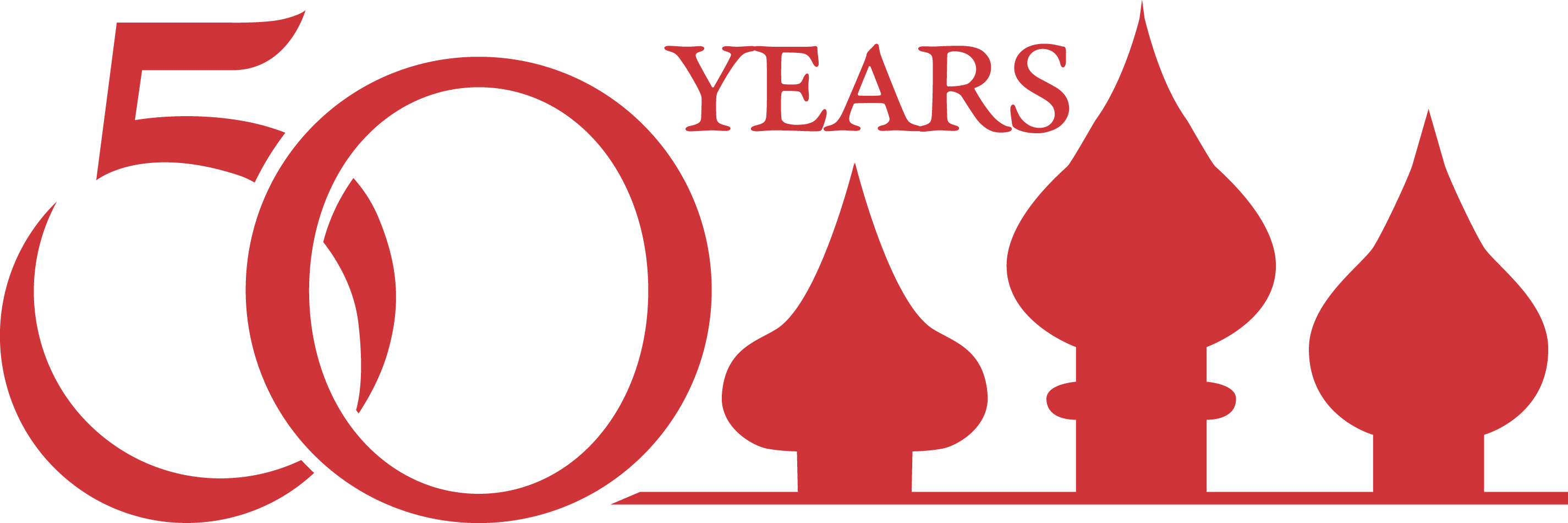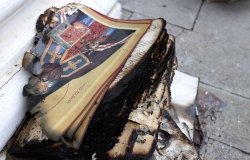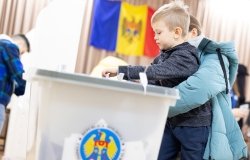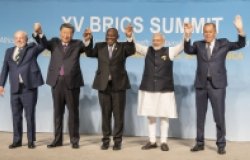
A blog of the Kennan Institute
Bridging Russia’s History of Terror

A pro-government military correspondent known by the pen name of Vladlen Tatarsky is blown up in a café in the center of St. Petersburg. Forty people are injured in this act of terror. Just two days earlier, a young American journalist was imprisoned on charges of espionage. Dozens of Russian citizens find themselves behind bars every week for nothing. And this is also terror. It is a terror exacted without bombs, but the casualties are very real.
The only entity responsible for it is the state, aided and abetted by supporters such as the dead blogger and those who now demand his death be avenged. The new look of state terror both resembles and is starkly different from past eras of terror.
The Routinization of Terror
Modern state terror in Russia does not recognize sovereign countries’ borders or any individual’s rights. Rules and conventions are consigned to the garbage bin. While each case is different, the overarching narrative is not. Terror is now a daily routine, something that drops from the bluest of skies onto unsuspecting victims.
The arrest of American journalist Evan Gershkovich, who reports for the Wall Street Journal, in Yekaterinburg amounted to political hostage-taking. This is terror on a supranational scale, when the authorities of a huge country turn to the methods of thugs to poke another country in the eye. The Russian state has been borrowing from the toolkit of the likes of Taliban, officially recognized as a terrorist organization but repeatedly welcomed at the highest level in Moscow.
The twenty-six-year-old woman who allegedly handed the fatal statuette to Tatarsky in a café, Daria Trepova, has been labeled not just a traitor working for the Ukrainian special services, but also a supporter of the Russian opposition leader Alexei Navalny—and, all this before trial. Both Ukraine and Navalny’s Anti-Corruption Foundation are fierce enemies of Putin's system.
Of course, the law enforcement agencies have jumped at the opportunity to present Trepova as a bridge between Navalny’s foundation and Ukraine’s special services. It is not hard to predict further developments: a fierce persecution of the foundation’s supporters is inevitable. Everyone will be wanted: volunteers, activists who sympathize with Navalny, those who were seen at rallies, those who donated, those who posted and reposted anti-war slogans.
There may also be attempts to find and deactivate Vladimir Putin's opponents living abroad. Now everyone needs to think about their own safety—everyone, including those living in the EU, the UK, or North America. The rules have been shattered.
The largest country on the world map, a nuclear power with a permanent seat on the UN Security Council (Moscow has just assumed the chairmanship of the Security Council), a state that has been an important part of the world order, international relations, and the global economy—Russia is now a threat to all those things. The state is unpredictable, cruel, and embittered.
The Usual News
Here is the usual news from Russia. In the Tula region, armed special forces storm the apartment of the sixty-two-year-old Sergei Buivol. They open fire on the man, and all because of an anti-war post on Odnoklassniki, a Russian social media platform.
In Moscow, the court decides to keep the scientist Viktor Moskalev under arrest for two months because of two comments on the website executive.ru.
Petersburg archaeologist Oleg Belousov is sent to a penal colony for five and a half years on charges of disseminating “false information about the Russian army” and “incitement to extremism.” Belousov, who has a disability, provides for his son, who also suffers from a disability.
Moscow pensioner Mikhail Simonov is sent to a colony for seven years for two anti-war comments on Vkontakte, Russia’s largest social media platform.
These things are the new routine. Independent journalists from Russia cover this “routine” on a daily basis and, because of this, are forced to cover the country from abroad. But for foreign journalists, it seemed until recently, there was an opening. We almost envied Evan Gershkovich the freedom to come see us in Riga, write a piece about Dozhd TV channel, and fly back to Moscow. Because he was a correspondent for the respectable Wall Street Journal, and he was American, he was safe. Last week, we realized that this rule too no longer holds.
The State Constructs a Response
Putin’s press secretary Dmitry Peskov, who has lost the remaining vestiges of his reputation, does not hesitate to announce that Gershkovich was “caught red-handed.” in alleged espionage. Maria Zakharova, the official representative of the Ministry of Foreign Affairs, who until recently communicated with all foreign journalists and gave interviews and who knew exactly who Evan Gershkovich was, has agreed with the investigating authorities: the activities of this U.S. citizen “went beyond journalistic.”
I do not doubt for a second that Maria Zakharova knows absolutely nothing about the circumstances of the arrest of the American correspondent or the details of his work in Yekaterinburg. She is not informed. But she will find things to say, she will invent details. Evan is in the notorious Lefortovo pretrial detention center, because he is a valuable figure carrying the main enemy’s passport. His head is worth a lot. The trade is already underway. Foreign Minister Lavrov, with whom the West has long vowed to conduct serious diplomatic negotiations, receiveds a call from U.S. secretary of state Antony Blinken, demanding Gershkovich be released. The Russian side delivered an absurd, if not mocking, riposte, “not to politicize the incident.”
The Terror State in Russian History and Today
History, as we know, tends to repeat itself, if sometimes in an unexpected way. In 1877 the Russian socialist activist Vera Zasulich, shot the St. Petersburg governor, Fyodor Trepov. She injured but did not kill him. Yes, the official’s last name was Trepov, just like the young woman’s who is now charged with the murder of Tatarsky.
There are many differences between these two incidents. There was much sympathy for Vera Zasulich in nineteenth-century Russia. Zasulich was acquitted by the jury—an outcome that is unthinkable in modern Russia. Zasulich was not called an agent of foreign intelligence services. There is, however, an important similarity: the shadow of the state falls on both.
One hundred fifty years ago, the state decided whom to execute, whom to pardon, what citizens could say, what to think and what they should keep silent about. And now Putin’s state does the same, but on a much more terrible scale. The “military correspondent” Tatarsky would not have become a celebrity, the face of the era, if not for the state and its war. Daria Trepova—if she proves to be the bomber—most likely would just go to rallies, and not carry statuettes with bombs hidden inside. This is not an attempt at justification or a statement in support of the organizers of the explosion in St. Petersburg. It is a statement of fact.
In tsarist Russia, the “romanticism” of fighting for democracy with dynamite predictably resulted in general disappointment. Terror, even if launched from a place of righteous anger, turns on itself to create a new cycle of terror, to be followed by even more terrible repressions.
How will the state respond to the explosion in St. Petersburg? The most radical voices, among whom the murdered Tatarsky should be counted, demand blood. Whether the state will hear them or not is unclear, but there will definitely be even more terror inside Russia.
The opinions expressed in this article are those solely of the author and do not reflect the views of the Kennan Institute.
About the Author


Kennan Institute
The Kennan Institute is the premier US center for advanced research on Eurasia and the oldest and largest regional program at the Woodrow Wilson International Center for Scholars. The Kennan Institute is committed to improving American understanding of Russia, Ukraine, Central Asia, the South Caucasus, and the surrounding region though research and exchange. Read more











